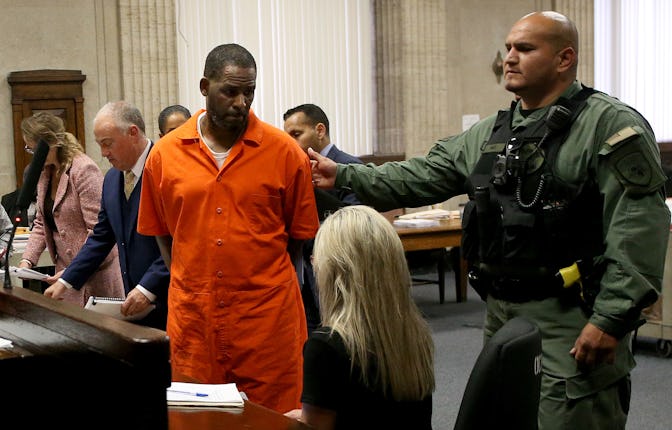YouTube removing R. Kelly's channels is hollow progress
YouTube took a step forward, but it's all for nought if they and other streaming services don't go even further.

You won’t be able to find R. Kelly’s official YouTube channels on the video streaming platform, but that doesn’t mean the company won’t still be making money off of the disgraced singer. A week after R. Kelly was convicted of federal racketeering and sex trafficking charges, YouTube deleted his RKellyTV channel from the platform and the Vevo account hosting his music videos.
According to YouTube spokesperson Ivy Choi, Kelly’s accounts were removed “in accordance with our creator responsibility guidelines.” Those guidelines stipulate YouTube may remove an account if the offender had been convicted of serious crimes and have YouTube content related to those very crimes. A convicted sex offender whose legacy is predicated on painting women as sexual conquests more than fits the description for expulsion. But, Kelly is an especially dangerous case for YouTube’s users due to his widespread popularity.
In an internal memo from YouTube’s head of legal, Nicole Alston, obtained by Bloomberg, the service enacted “penalties beyond standard enforcement measures” due to the “egregious” nature of his offenses and as a way to protect their users. Part of those enhanced enforcement measures includes banning Kelly from ever creating a YouTube profile again. This is the most severe consequence leveled against Kelly by a streaming platform since May 2018 when Spotify, Apple Music, and Pandora removed his music from their featured playlists and vowed to not promote the singer’s music. Spotify even went as far as to enact an entirely new hateful conduct policy to prevent promoting artists involved in “rare cases of the most extreme artist controversies,” according. to the policy. Unfortunately, those measures were as hollow as YouTube’s pseudo-ban.
While R. Kelly won’t be able to upload his content to an official YouTube profile page, Kelly’s music and music videos will be free to stream on YouTube via user-generated profiles and “topic” pages which allow audio streaming of an artist’s content. That same content that YouTube wants to protect its users from is out in the open on various pages, ready for users to consume at will. His 1993 song “I Like The Crotch On You” where he tells a young lady he’ll have sex with them “only if you're old enough, baby. 18 and over or 16 and younger” is still on YouTube, with an ad for a nursing school playing before it. His song “I’m A Flirt (Remix),” where the man who has been accused of prowling for young women at malls proudly sings that he’s “a dog on the prowl when I’m walking through the mall,” is still on YouTube. And it gets worse.
Kelly’s full catalogue will still be streamed on YouTube Music, the subscription streaming arm of YouTube. The only tangible results of YouTube’s removal of official R. Kelly channels is Kelly won’t be able to directly profit from his music placed on YouTube and YouTube gets to appear to be on the right side of history. But the insidious truth is YouTube, just like Spotify — which eliminated its hateful conduct policy weeks after implementing it — will continue to profit off of the very content they publicly deem harmful to its users. In the second quarter of 2021 alone, YouTube’s video content generated $7 billion in ad revenue, from which YouTube takes 45 percent. Streaming services like Apple Music, Spotify, YouTube Music, and all the others may never remove the music of an artist as popular as R. Kelly from their platform because that would mean losing out on potentially millions of dollars and their most important asset: subscribers.
Once you factor in the uproar from the record labels who own the rights to Kelly’s music and supply streaming services with the music that attracts subscribers, you’ll see how profit-driven companies like YouTube’s idea of taking a stand is strictly for show and not for progress.